Prediction, postdiction, and perceptual length contraction: a bayesian low-speed prior captures the cutaneous rabbit and related illusions
- PMID: 23675360
- PMCID: PMC3650428
- DOI: 10.3389/fpsyg.2013.00221
Prediction, postdiction, and perceptual length contraction: a bayesian low-speed prior captures the cutaneous rabbit and related illusions
Abstract
Illusions provide a window into the brain's perceptual strategies. In certain illusions, an ostensibly task-irrelevant variable influences perception. For example, in touch as in audition and vision, the perceived distance between successive punctate stimuli reflects not only the actual distance but curiously the inter-stimulus time. Stimuli presented at different positions in rapid succession are drawn perceptually toward one another. This effect manifests in several illusions, among them the startling cutaneous rabbit, in which taps delivered to as few as two skin positions appear to hop progressively from one position to the next, landing in the process on intervening areas that were never stimulated. Here we provide an accessible step-by-step exposition of a Bayesian perceptual model that replicates the rabbit and related illusions. The Bayesian observer optimally joins uncertain estimates of spatial location with the expectation that stimuli tend to move slowly. We speculate that this expectation - a Bayesian prior - represents the statistics of naturally occurring stimuli, learned by humans through sensory experience. In its simplest form, the model contains a single free parameter, tau: a time constant for space perception. We show that the Bayesian observer incorporates both pre- and post-dictive inference. Directed spatial attention affects the prediction-postdiction balance, shifting the model's percept toward the attended location, as observed experimentally in humans. Applying the model to the perception of multi-tap sequences, we show that the low-speed prior fits perception better than an alternative, low-acceleration prior. We discuss the applicability of our model to related tactile, visual, and auditory illusions. To facilitate future model-driven experimental studies, we present a convenient freeware computer program that implements the Bayesian observer; we invite investigators to use this program to create their own testable predictions.
Keywords: Kalman smoothing; motion illusions; optimal percepts; probabilistic inference; sensory saltation; sensory uncertainty; somatosensory spatiotemporal perception; tactile spatial attention.
Figures




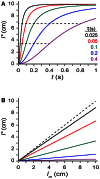


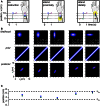
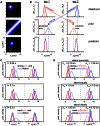
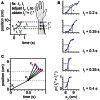
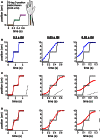

Similar articles
-
Tactile length contraction as Bayesian inference.J Neurophysiol. 2016 Aug 1;116(2):369-79. doi: 10.1152/jn.00029.2016. Epub 2016 Apr 27. J Neurophysiol. 2016. PMID: 27121574 Free PMC article.
-
A Bayesian perceptual model replicates the cutaneous rabbit and other tactile spatiotemporal illusions.PLoS One. 2007 Mar 28;2(3):e333. doi: 10.1371/journal.pone.0000333. PLoS One. 2007. PMID: 17389923 Free PMC article.
-
What you saw is what you will hear: Two new illusions with audiovisual postdictive effects.PLoS One. 2018 Oct 3;13(10):e0204217. doi: 10.1371/journal.pone.0204217. eCollection 2018. PLoS One. 2018. PMID: 30281629 Free PMC article.
-
Perception, illusions and Bayesian inference.Psychopathology. 2015;48(4):217-21. doi: 10.1159/000437271. Epub 2015 Aug 8. Psychopathology. 2015. PMID: 26279057 Review.
-
Illusions in action: consequences of inconsistent processing of spatial attributes.Exp Brain Res. 2002 Nov;147(2):135-44. doi: 10.1007/s00221-002-1185-7. Epub 2002 Sep 28. Exp Brain Res. 2002. PMID: 12410328 Review.
Cited by
-
Making sense of feelings.Neurosci Conscious. 2024 Sep 19;2024(1):niae034. doi: 10.1093/nc/niae034. eCollection 2024. Neurosci Conscious. 2024. PMID: 39301415 Free PMC article.
-
Retracing the rabbit's path: Effects of altering the second flash position in the visual saltation illusion.Iperception. 2024 May 21;15(3):20416695241254016. doi: 10.1177/20416695241254016. eCollection 2024 May-Jun. Iperception. 2024. PMID: 38778865 Free PMC article.
-
On the interplay between time and space perception in discontinuous stimulus displays.Atten Percept Psychophys. 2023 Oct;85(7):2406-2421. doi: 10.3758/s13414-023-02678-5. Epub 2023 Feb 24. Atten Percept Psychophys. 2023. PMID: 36828992 Free PMC article.
-
Spatial distances affect temporal prediction and interception.Sci Rep. 2022 Sep 22;12(1):15786. doi: 10.1038/s41598-022-18789-2. Sci Rep. 2022. PMID: 36138102 Free PMC article.
-
Tau and kappa in interception - how perceptual spatiotemporal interrelations affect movements.Atten Percept Psychophys. 2022 Aug;84(6):1925-1943. doi: 10.3758/s13414-022-02516-0. Epub 2022 Jun 15. Atten Percept Psychophys. 2022. PMID: 35705842 Free PMC article.
References
LinkOut - more resources
Full Text Sources
Other Literature Sources
Miscellaneous


